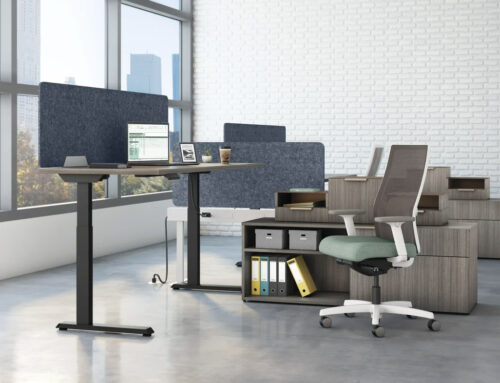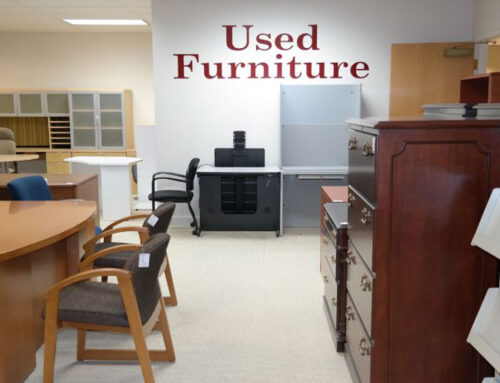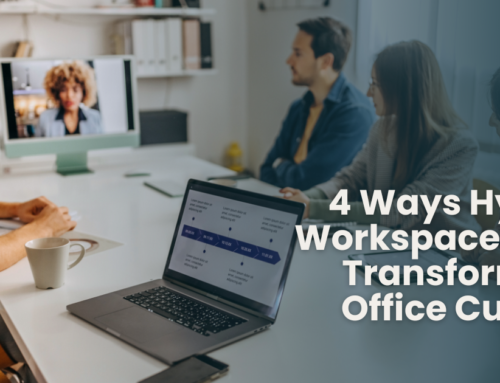 Your Workspace Should be Pain-free
Your Workspace Should be Pain-free
Many of us work at jobs that require spending a large part of the day in a sedentary position in a chair, in front of a computer. This actually places a lot of stress on our bodies and can even lead to the development of physical pain and ailments. OSHA (The US Occupational Safety and Health Administration) defines working environment ergonomics as: “The Science of fitting workplace conditions and job demands to the capabilities of the working population.” If your desk was set up without any consideration to ergonomics, it may be contributing to — or causing — a range of aches, pains, and even injury.
Dr. Richard Busch of Busch Chiropractic in Fort Wayne, who has treated thousands of patients who suffer with neck and back pain states, “Some of these injuries could have been avoided. Years, even months, of using poor quality office furniture, furniture that has not been set up properly for the user, or bad posture, may lead to early wear and tear, chronic back pain or neck pain including disc degeneration or herniated discs causing back pain and/or neck pain.”
Below are guidelines for workspace use that will reduce physical strain and increase comfort and productivity:
Proper Seating
- maximize the options of an adjustable chair to find the best fit for you
- keep a couple of inches between the front of the seat and the back of your knees
- support your lower back with the chair’s lumbar support or add a small cushion
- sit reclining slightly away from your desk — a stiff-backed posture is stressful for the spine
- keep your feet flat on the floor, about hip-width apart, and don’t cross your legs
- adjust the seat height so that knees are at a 90 degree angle — or lower — from the hips
Upper Body Relaxed
- the alphabetical part of the keyboard should be centered in front of you
- with hands on the keyboard, wrists should be in a neutral position or supported by a wrist rest
- elbows should be at a 90 degree angle when hands are on the keyboard
- keep the mouse as close to the keyboard as possible
- use keyboard shortcuts instead of the mouse — when using the mouse move it from your elbow rather than your wrist
- consider an adjustable keyboard tray attached to your desk for proper wrist and arm positioning
- keep shoulders relaxed when holding the phone — consider a headset if you are on the phone for long periods
- don’t crane your neck towards your computer — its weight should be supported by the neck and spine
Limit Eye Strain
- keep the monitor at arm’s length from your eyes; raise it so that the top of the screen is about eye-level
- tilt your monitor 10-20 degrees away from you
- avoid glare on the screen from windows or other light sources
- give your eyes frequent breaks by looking at a far away objects for a few seconds
- if you reference paperwork while typing, use an attachable holder to place documents as close to the screen as possible
Get up!
- take frequent small stretching breaks for hands and fingers, legs and ankles, neck and shoulders — you can even do these while seated
- throughout the day, take occasional longer breaks to move your whole body — stand, stretch, walk, and climb stairs
A note on laptops:
Laptop use at the office is on the rise. Unfortunately, the ergonomics in laptop design are poor — if the screen is at an appropriate height and distance, the keyboard is impossible to use, and vice versa. If you work at a laptop for a significant amount of time, add an external keyboard or monitor so that less stress is placed on your body and eyes. Keep in mind your office chair and desktop height, as described above, for the least stress possible.
Your workspace arrangement may be putting more stress on your body than you realize. The knowledgeable professionals at Workspace Solutions in Fort Wayne can help you identify the best office furniture and designs for a more ergonomic office space and improved work flow. Our goal is to help you work better — more efficiently and more comfortably.




